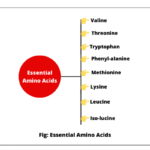20 Indian Councils Act MCQ Quiz Questions
Welcome to this challenging Indian Councils Act MCQ quiz! In this quiz, we’ve compiled 20 top multiple-choice questions based on the Indian Councils Act, 1861, 1892, and 1909. These MCQ quizzes will test your knowledge and boost your preparation for UPSC, SSC, Railway, and State PCS exams.
So, are you ready to score 20/20? Let’s find out how well you really know the Indian Councils Act. Let’s begin with question number 1.👇
1. The Indian Councils Act of 1861 was passed during the rule of which British Governor-General?
A. Lord Canning
B. Lord Dalhousie
C. Lord Ripon
D. Lord Curzon
a
The Indian Councils Act of 1861 was passed during the rule of Lord Canning, who was the Governor-General and also the first Viceroy of India at the time.
2. What was the main purpose of the Indian Councils Act, 1861?
A. To introduce provincial autonomy
B. To expand the executive councils and include Indian people in law-making
C. To grant independence to India
D. To implement dyarchy in provinces
b
The Indian Council Act 1861 empowered the Governor-General to nominate Indians as non-official members to the expanded Legislative Council for the first time.
3. Who was the Viceroy of India when the Indian Councils Act of 1861 was enacted?
A. Lord Curzon
B. Lord Ripon
C. Lord Dufferin
D. Lord Canning
d
Lord Canning was the first Viceroy of India and passed the Indian Councils Act of 1861 to bring legislative reforms after the Revolt of 1857.
4. Which important change was brought by the Indian Councils Act of 1861 in the legislative process?
A. Centralization of legislative powers
B. Abolition of legislative councils
C. Introduction of portfolio system
D. Separation of legislative powers
c
The portfolio system was introduced in India by Indian Councils Act of 1861 and implemented by Lord Canning. During this system, different council members handled specific departments.
5. Which of the following was not a feature of the Indian Councils Act of 1861?
A. Introduction of the portfolio system
B. Inclusion of Indians in the Executive Council
C. Nomination of Indians to the Legislative Council
D. Decentralization of legislative powers
b
Indians were nominated to the Legislative Council, but no Indians were included in the Executive Council under this Act.
6. How many additional members could the Governor-General nominate to the Legislative Council under the Indian Councils Act of 1861?
A. 2 to 4
B. 4 to 6
C. 6 to 12
D. 6 to 16
c
The Governor-General could nominate 6 to 12 additional members, including Indians, to the Legislative Council.
7. Which Viceroy of India was associated with the Indian Councils Act of 1892?
A. Lord Ripon
B. Lord Curzon
C. Lord Dufferin
D. Lord Lansdowne
d
Lord Lansdowne was the Viceroy of India under the Indian Councils Act of 1892 who served from 1888 to 1894.
8. With reference to the Indian Councils Act of 1892, which of the following statements is/are correct?
- The non-official members of the Indian Legislative Council were to be nominated by bodies such as the Provincial Legislative Councils and the Bengal Chamber of Commerce.
- The Act allowed the Legislative Councils to discuss the budget and ask questions to the executive.
Select the correct answer using the below:
A. 1 only
B. 2 only
C. Both 1 and 2
D. Neither 1 nor 2
c
The non-official members of the Provincial Legislative Councils were to be nominated by the government, but the nominations were based on recommendations from certain local bodies such as universities, district boards, municipalities, zamindars, and chambers of commerce.
9. Which of the following Acts first introduced the principle of indirect election in India?
A. Indian Councils Act, 1861
B. Indian Councils Act, 1892
C. Indian Councils Act, 1909
D. Government of India Act, 1919
b
Britishers through the Indian Councils Act of 1892, introduced the system of indirect election in India for the first time in the year 1892.
10. The Indian Councils Act of 1892 was important because
A. It abolished the monopoly of the East India Company.
B. It gave Indians complete legislative powers.
C. It allowed universal adult franchise for the first time.
D. It marked the beginning of Indian representation in the Legislative Councils.
d
The Indian Councils Act of 1892 was significant because it marked the beginning of Indian representation in the Legislative Councils.
11. Which of the following were allowed for the first time under the Indian Councils Act of 1892?
A. Indians were appointed as Governors.
B. Legislative Councils were to have the power of discussing Budget and addressing questions to the Executive.
C. Governor-General could not issue ordinances
D. None of the above
b
The Indian Councils Act of 1892 were to have the power of discussing Budget and addressing questions to the Executive.
12. Which of the following Acts introduced separate electorates for Muslim community in India?
A. Indian Councils Act, 1861
B. Indian Councils Act, 1892
C. Indian Councils Act, 1909
D. Government of India Act, 1919
c
The Indian Councils Act of 1909 introduced separate electorates for Muslim community, allowing them to elect their own representatives. It marked the beginning of communal representation in Indian politics.
13. Who was known as the “Father of Communal Electorate” in India?
A. Lord Ripon
B. Lord Curzon
C. Lord Morley
D. Lord Minto
d
Lord Minto, the then Viceroy of India, is known as the “Father of Communal Electorate”.
14. The Indian Councils Act of 1909 is also known as:
A. Montagu-Chelmsford Reforms
B. Morley-Minto Reforms
C. Pitts India Act
D. Government of India Act
b
Indian Councils Act, 1909 is popularly called Morley-Minto Reforms, named after the Secretary of State for India, John Morley, and the Viceroy of India, Lord Minto.
15. Who was the first Indian to join the Viceroy’s Executive Council?
A. Dadabhai Naoroji
B. Gopal Krishna Gokhale
C. Surendranath Banerjee
D. Satyendra Prasanna Sinha
d
Satyendra Prasanna Sinha (later Lord Sinha) became the first Indian to be appointed to the Viceroy’s Executive Council in 1909. He was appointed as Law Member.
16. Which of the following changes were introduced by the Indian Councils Act of 1909?
- The Morley-Minto Reforms (Indian Councils Act of 1909) enlarged the number of additional members in both the Central and Provincial Legislative Councils.
- It introduced the principle of communal representation in the Legislature.
- It empowered the Legislative Councils to discuss the budget and to move resolutions on it.
Which of these statements are correct?
A. 1 and 2
B. 2 and 3
C. 1, 2 and 3
D. 1 and 3
c
The Indian Councils Act of 1909, also called the Morley-Minto Reforms, increased the size of Central Legislative Councils from 16 to 60 members. The size of Provincial Legislative Councils also expended by including elected non-official members so that the official majority was gone. The Indian Councils Act of 1909 provided limited powers to Indian members in the Legislative Council. First time, members were allowed to discuss the annual budget and also permitted to move resolutions on matters of public interest.
17. Which of the following Acts introduced the concept of ‘Diarchy’ in provinces?
A. Indian Councils Act, 1861
B. Indian Councils Act, 1892
C. Indian Councils Act, 1909
D. Government of India Act, 1919
d
Government of India Act, 1919 introduced the concept of ‘Diarchy’ in provinces.
18. The Montagu-Chelmsford Reforms were introduced through which Act?
A. Indian Councils Act, 1892
B. Indian Councils Act, 1909
C. Government of India Act, 1919
D. Government of India Act, 1935
c
The Montagu-Chelmsford Reforms were enacted through the Government of India Act, 1919.
19. The Government of India Act, 1919 divided the subjects of administration into:
A. Federal and State
B. Reserved and Transferred
C. Executive and Legislative
D. None of the above
b
Under Diarchy, subjects were divided into “reserved” (British control) and “transferred” (Indian ministers).
20. The term ‘Communal Electorate’ introduced under the 1909 Act meant:
A. Separate elections for Hindus and Muslims
B. Reservation for lower castes
C. Caste-based representation
D. None of the above
a
Communal Electorates meant Muslims could elect their own representatives separately, based on religion.
Quiz Results
Total Questions: 0
Correct Answers: 0
Incorrect Answers: 0
Score: 0%






